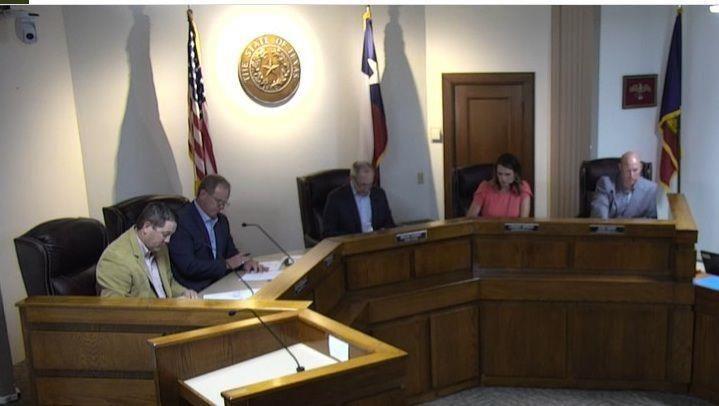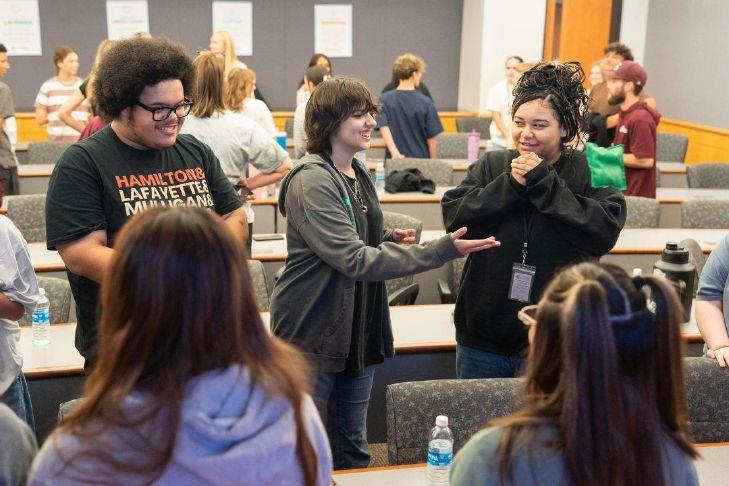The Sherman Museum is transporting visitors back to the era of massive mammals and giant glaciers this summer with the return of Dino Days. For its 14th year, the annual exhibit is focusing less on the dinosaurs and more on the animals that roamed the earth after them.
The annual display of fossils, skeletal recreations and other artifacts is one of the largest attractions for the museum and brings in about two-thirds of its annual visitors each year.
“It is just a chance for us to connect with local residents as well as people from all over the county and North Texas,” Sherman Museum Director Stuart Holcomb said. “It is a way to get into the scientific parts of history that allows us to dig into paleontology, geology, rock collecting and things like that as well as getting to talk about dinosaurs. Sometimes I teach aboult the animals just as a different way to learn about history.”
For this year’s exhibit, Holcomb requested fossils and other displays of the direwolf. In April, Colossal Biosciences announced it had used cloning and other efforts to create three genetically modified wolf puppies, in an effort to recreate some dire wolf traits in modified grey wolves.
While the direwolf likely never called Grayson County home, it did live as nearby as Wichita Fall and areas to the west.
“Rather than a north-south dividing line that you find for most animals, this is an east-west dividing line,” Museum Curator Jacob Lee said.
During the ice ages, North Texas was largely a part of the southern plains. The region was also a drainage area for mountain ranges to the east and west, which allowed fossils from species elsewhere to collect over time.
“Even while we might find things in the fossil record, that doesn’t necessarily mean they were here,” Lee said. “They (the fossils) might have just been in this place as well.”
Other animals that are on display did call portions of North Texas home. The short-face bear, one of the largest bears to ever exist, did live in the region and traveled as far south as Mexico.
While the dinosaurs have been a perennial favorite of visitors of the museum, the ice age animals have a similar appear, Lee said. Much like the “terrible lizards” that came before them, the mammals of the ice age were large, much larger than many of their larger cousins that live today.
“A lot of the appeal of dinosaurs is size and the ice age era was known for its megafauna and charismatic megafauna — really big animals — as well,” Lee said.
Where the Jurassic Park movies have kept dinosaurs in the minds of kids for decades, Lee said the Ice Age movie franchise has done the same for many of the animals that rose during the ice age. Another appeal of the ice age displays is that many of their ancestor species can still be seen today, However, their modern cousins don’t live in the same parts of the world. As an example, Lee said the wooly mammoth called North America home, but modern elephants are native to Africa and Asia.
The Dino Days displays are among the major attractions for the museum each year, with Holcomb estimating about two-thirds of visitors come during the summer months. This is helped by schools being out and large groups visiting the museum.
“That’s not to say our attendance during the rest of the year is bad, but the combination of summer and kids being out of school and people having more time, and then there being something like dinosaurs to draw them in just really kind of exacerbates those numbers,” Lee said.
Holcomb said the museum hopes to use the interest in Dino Days to bring visitors back later in the year when more of its local history exhibits return.
“It is explained to them that when the dinosaurs go away in the fall, we will have more local history exhibits, and it is not uncommon to see people come back in the fall or the spring to see that new local history exhibit,” Lee said.
Dino Days is scheduled to run through Aug 29. For more information, please visit https://theshermanmuseum.org/.




